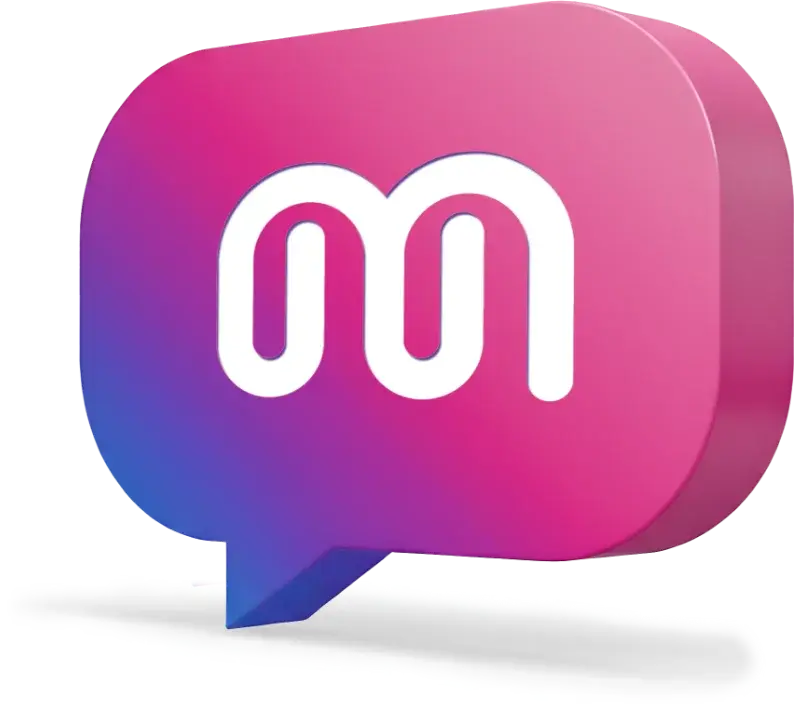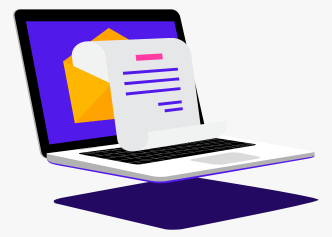SECTION
Employee Segmentation: Definition, Types, Models, and Step-by-Step Guide

Listen to this article:
When you look up at the night sky, it’s just a blanket of stars: beautiful, but chaotic. It’s only when you use a telescope that patterns appear: constellations, galaxies, and even planets hiding in the noise. Without the right lens, you miss the bigger picture.
Employee communication works the same way.
Take the last company town hall. Leadership spent weeks preparing a speech meant to inspire everyone. However, managers found it too vague, frontline employees struggled to connect it to their work, and remote employees left the meeting halfway through. The message was there, but it didn't land because the workforce wasn't segmented.
Workforce segmentation enables HR and Internal Communication Specialists to identify the real clusters within the workforce, ensuring the right message reaches the right people at the right time.
What is employee segmentation?
Employee or workforce segmentation is the practice of categorizing employees into distinct groups based on shared traits, behaviors, needs, or other relevant criteria. This approach enables HR leaders and managers to design initiatives, communications, and policies that resonate with specific groups, rather than applying a one-size-fits-all model. Strategic segmentation can also help identify emerging workplace leaders within these groups, which reduces external recruitment costs.
Why is employee segmentation important?
Today’s organizations are more diverse than ever. Workforces are usually composed of employees across multiple generations, geographies, roles, and work arrangements. Communicating with everyone in the same way can be costly for companies, as it can lead to disengagement, inefficiency, and missed opportunities. For example, you can’t use the same strategies to engage frontline employees as you use to engage office-based teams.

Below are the most significant benefits of employee segmentation:
✅ Alignment: Employees understand how their role contributes to the overall strategy.
✅ Engagement: Communication feels relevant, boosting participation.
✅ Productivity: Efforts are focused where they deliver impact.
✅ Retention: Risks within segments are identified early.
✅ Workforce planning: HR can anticipate needs and allocate resources.
✅ Leadership credibility: Messages are more targeted and trusted.
To better understand the advantages of workforce segmentation, here is how organizations can integrate it into daily work:
- Internal communications: HR and Internal Communication Specialists can tailor newsletters or company updates to ensure that even frontline or remote colleagues are up-to-date on important messages.
- Recruitment: Talent Acquisition Specialists can use psychographic insights to identify candidates who align with company values and team culture.
- Engagement initiatives: HR and team leads can adjust recognition programs based on different segmentation criteria to increase employee engagement, such as feedback style preferences: public vs. private.
- Learning & development: Learning & Development Specialists can create customized training journeys based on skill needs and career stage.
- Retention strategies: HR leaders can identify at-risk groups, such as employees exhibiting higher absenteeism rates, and implement targeted intervention actions before turnover occurs.
Common challenges in employee segmentation
Although employee segmentation is powerful and can offer many benefits to organizations, it comes with its own challenges:
- Workforce segmentation relies on accurate, complete, and up-to-date information about employees to be effective. Most organizations have employee data stored in multiple systems and sources, making it challenging to organize and update, which can compromise the accuracy of segmentation results.
- Inadequate segmentation models can perpetuate stereotypes or provide particular groups with unfair advantages. It is extremely important to be aware of potential bias risks and attempt to minimize them as much as possible throughout the process.
- Grouping people into broad categories may fail to address certain individual traits, whereas having too many employee segments can overwhelm HR teams and dilute their impact. There is a fine line between oversimplification and complexity, so you must be careful when choosing your employee personas.
- People are often reluctant to share personal information. Some may feel unfairly categorized or labeled. Gaining people's trust is one of the most common challenges organizations face when collecting employee data.
- Employee segmentation must be continuously updated to remain relevant. This process can be time-consuming, but it pays off tremendously in the long run.
💡☝️ Pro tip: Ensuring segmentation is carried out correctly is crucial for gaining people's trust. Open communication and complete transparency regarding the segmentation goal and the data collection process will help achieve better buy-in.
Types & models of employee segmentation
To better understand and manage their varied workforce, organizations usually adopt the following fundamental workforce segmentation methods:
1. Demographic segmentation
In this method, groups are segmented based on age, tenure, job level, department, or education. Although it is one of the most common segmentation methods, it can also be the least effective, as it can result in demographic stereotyping. Demographics don’t help determine employee demands and are not accurate indicators of behavior.
🫱 When to use: Benefits design, career stage-specific L&D.
2. Geographic segmentation
This method categorizes the workforce by office location, region, or work mode (remote, hybrid, or on-site). The purpose is to address local labor market conditions, cultural variances, and employee preferences when businesses have several sites.
🫱 When to use: Timing of communication, localized policies, region-specific engagement.
3. Psychographic segmentation
This model is based on values, personality traits, types of optimal motivation, or career aspirations. Here, workforce specialists examine the background variables that cause differences between segments. They create employee personas for various segments based on these insights.
🫱 When to use: Recognition programs, recruitment, team composition, leadership programs, retention analysis.
Additional commonly used models:
- Role-based segmentation: Grouping by managerial responsibility or position in hierarchy.
- Skill-based segmentation: Identifying critical capabilities and gaps, essential for future workforce planning.
- Talent segmentation model: Differentiating high potentials, solid performers, and underperformers for tailored development.
- Tenure-based segmentation: Grouping employees by length of service (new hires, mid-tenure, veterans) to align onboarding and retention strategies.
- Performance-based segmentation: Identifying employees by achievement levels to support coaching and recognition programs.
- Needs-based segmentation: Dividing employees based on personal or professional needs, such as flexibility, career growth, or skill acquisition.
How to create an employee persona
An employee persona is a semi-fictional profile that represents a segment of your workforce. It combines real data with synthesized insights to help HR teams design experiences that meet specific needs.
Here is how to create employee personas in three easy-to-follow steps:
- Use employee surveys, interviews, HRIS records, and performance metrics to gather your data.
- Spot shared motivations, challenges, and communication styles to identify patterns.
- Build the profile by including demographics, goals, frustrations, work environment, and preferred communication channels.
Here is an example of an employee persona:
“Remote Early-Career Employee” 👉 0–2 years of experience. Works from home. Values rapid skill growth and transparent communication. Prefers instant messaging over email.
Step-by-step guide to doing employee segmentation
Although the benefits of workforce segmentation are undeniable, it's not an easy process and can be overwhelming to begin with. If you're unsure where to start, follow these simple steps:

Step 1: Define your objectives
Begin by defining what you aim to achieve with segmentation. Are you trying to improve retention, communication, or engagement? Do you have dispersed teams that need tailored messages and wellbeing initiatives, or are you preparing to scale your workforce? Having clear objectives guarantees accuracy and efficiency throughout the process.
Step 2: Select segmentation criteria
Based on your goal, define segmentation criteria. Take a look at this article's "Types & models of employee segmentation" section for inspiration. Whether your criteria are demographic, behavioral, psychographic, or role- or skill-based, ensure data consistency, accuracy, and adherence to privacy laws.
Step 3: Collect and clean your data
As previously mentioned, collecting accurate information is mandatory. So, we suggest collecting it from a variety of reliable sources, including engagement surveys, performance evaluations, feedback, and HRIS platforms like Mirro.
For example, with Mirro’s HR suite, you can keep employee personal data neatly organized with custom fields, private and public tags, and import & export options. Moreover, Mirro’s employee profiles are highly customizable with custom data fields, private and public tags, bios, and objective updates.
Every profile reflects the employee journey by listing user badges and endorsements, company values, business outcomes, and skills. All this employee data is easily accessible and stored in a single, secure hub that serves as your go-to source for collecting and creating employee segments.
Step 4: Build employee segments and test their relevance
Based on the selected criteria, start building initial employee segments and test them for practicality and clarity. If your segments are too general, have significant overlap, or fail to provide insightful information, that's an indicator that you need to refine them further.
Step 5: Create tailored strategies for each segment
After you've defined your segments, it's time to craft tailored strategies for each to maximize growth and performance. For example, if segmentation reveals that remote teams are more productive or just as productive as in-office groups, you could expand your work-from-home policy.
Step 6: Measure results with KPIs
Then, monitor KPIs to assess the effectiveness of your segmentation tactics. Track metrics such as productivity levels, retention rates, and employee engagement levels that can be measured through employee software surveys. Constantly monitoring your results enables you to make necessary adjustments to maintain the strategy's relevance.
Start workforce segmentation before it’s too late
Employee segmentation transforms scattered communication and generic programs into personalized experiences that resonate with employees' needs. By breaking the workforce into meaningful groups, HR and people leaders can:
- Deliver targeted communication;
- Design programs that match real employee needs;
- Improve retention and engagement;
- Strengthen leadership trust and organizational alignment.
The challenge for HR leaders is clear: does your current strategy truly reflect the diversity of your workforce?
Frequently Asked Questions
-
What are the main benefits of employee segmentation?
-
What are the four core types of segmentation?
-
How is employee segmentation different from workforce analytics?
-
How often should employee segmentation be updated?
-
Can small companies benefit from segmentation?
The main benefits of employee segmentation are higher engagement, personalized communication, better retention, and improved workforce planning.
The main types of segmentation are demographic, geographic, behavioral, and psychographic.
Employee segmentation groups employees into clusters, while workforce analytics interprets trends and outcomes across those groups.
At least annually, or whenever major organizational or workforce shifts occur.
Definitely! Segmentation can be applied at any scale, even with simple criteria like tenure, role, or work location.






